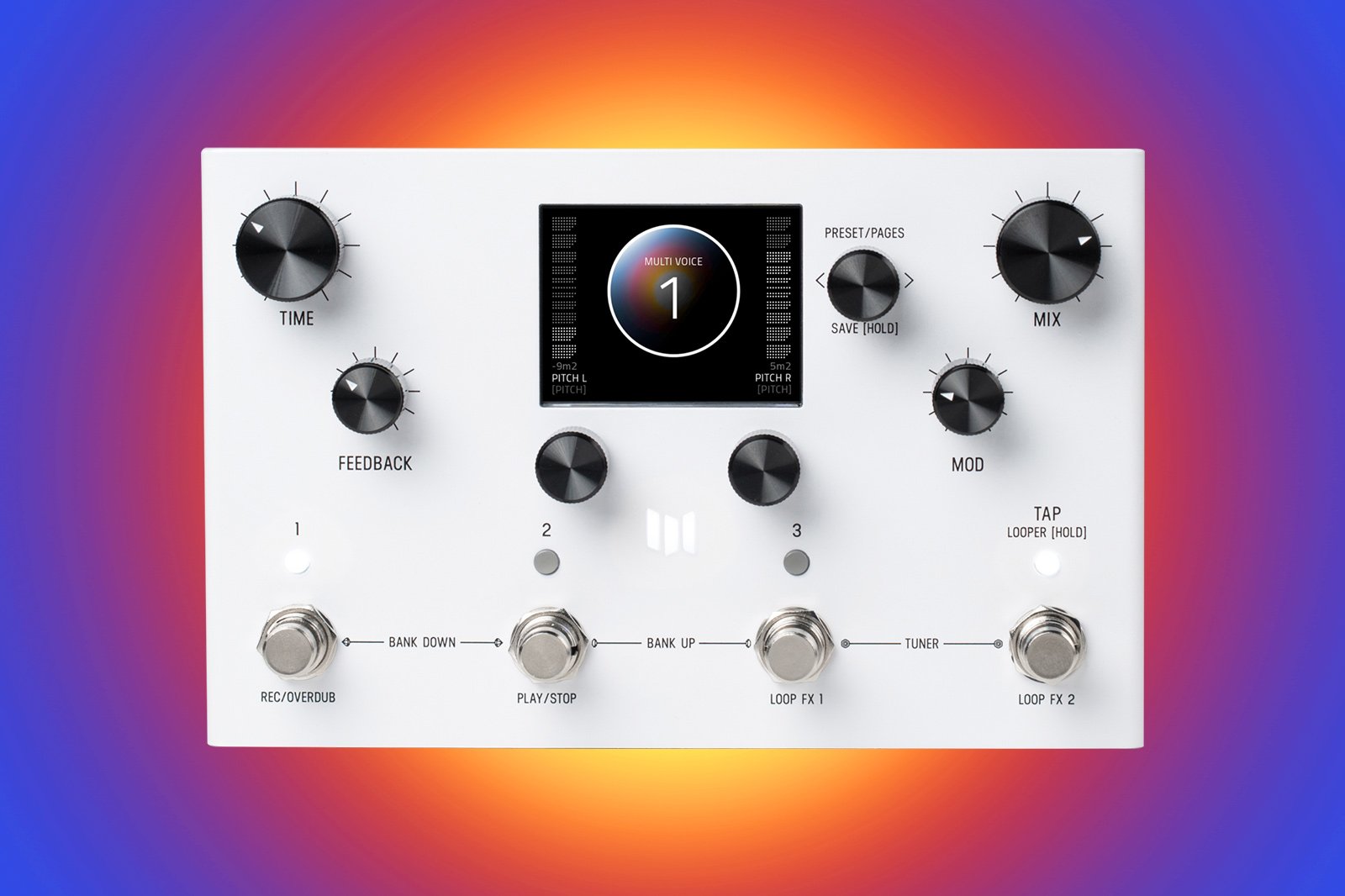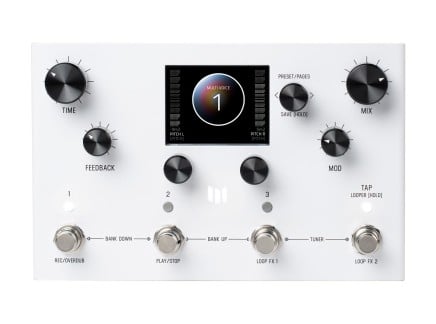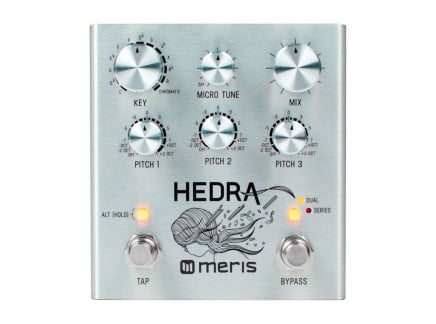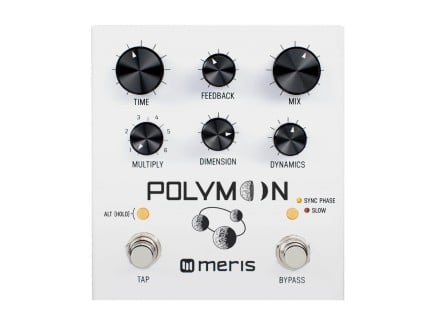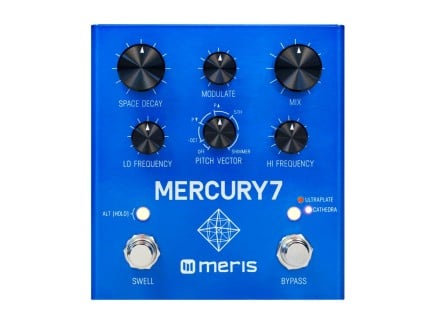When it comes to effects pedals, few brands pack premium sound quality and abundant functionality into a single box as well as Meris. It's no secret that we're fans of their pedals—earlier this year we shared an overview of the Meris pedals released up to that point. Time and time again, they've exhibited a strong penchant for drawing inspiration from classic effects or instruments, putting their own spin on the concept, and taking the design as far as it can go.
Today, Meris unveils LVX, an expansive pedal containing what Meris calls a "Modular Delay System." LVX certainly seems to be their most ambitious and powerful release to date. Delay is obviously the star of the show here, but LVX also encapsulates looping, pitch shifting, granular processing, and a whole lot of other effects in such a way that it's quite possibly one of the most customizable delay effects processors ever.
What Does Modular Delay System Mean?
There's a lot that LVX can do, and its power is only enhanced by its flexibility. While LVX exists as a self-contained pedal, its architecture draws inspiration from the free routing and patching approach of modular synthesizers. Much as how Eurorack systems and other modular formats are able to deviate from the signal flows found in conventional synthesizers, LVX challenges the delay pedal norm with the ability to place processing blocks nearly anywhere in the delay path. On top of that, Modifiers provide the ability to inject dynamic interaction and movement into your delay presets, drawing from synthesis control signals like LFOs, envelope followers, sample and holds, and sequencers.
Before even considering its looper, modifiers, or processing elements, the fully stereo delays at the core of LVX are themselves malleable to your wishes. Uniquely, LVX decouples the delay Type from the delay Structure, providing the most flexibility in determining the the personality of your delay entirely separately from how simple or complex it may become. As of launch, there are three delay types—pristine Digital, analog BBD, and Magnetic tape—and five different delay structures with their own host of parameters. LVX can cover everything from standard stereo and eerie reverse delays to eight-tap multi-delays (with or without filters per tap) and a dual version of their Polymoon algorithm.
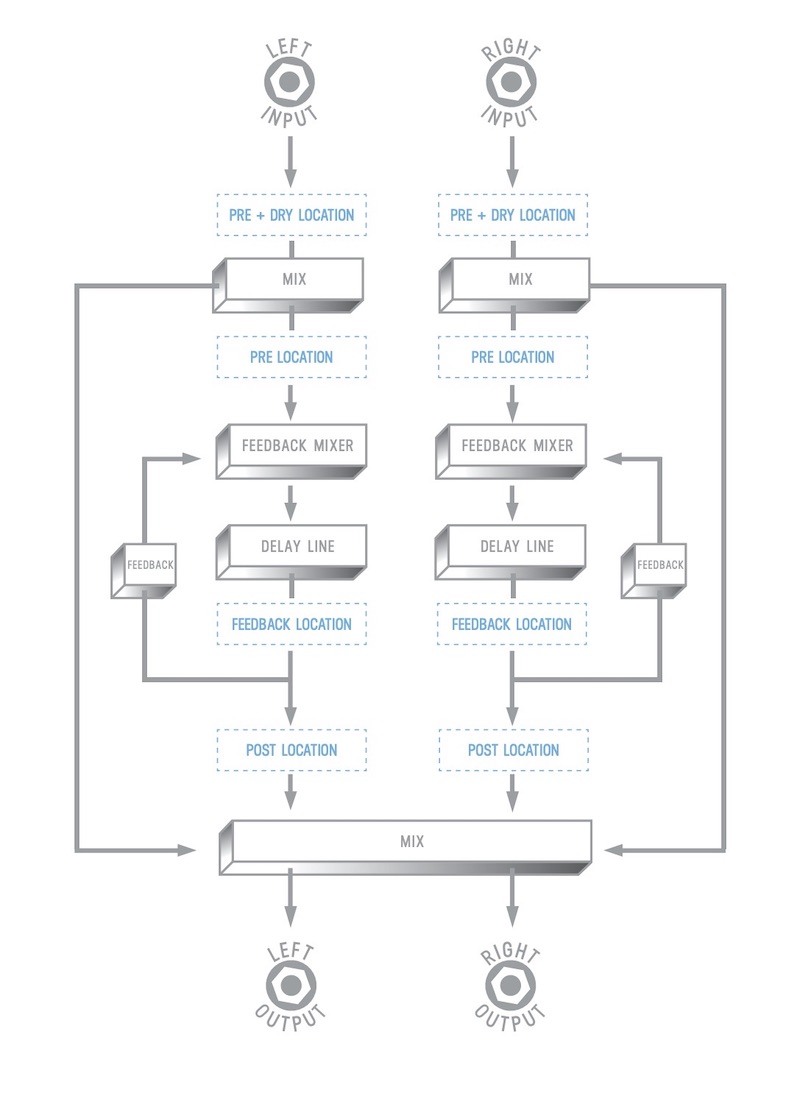
Wild delay pedals with other tricks up their sleeves are all the rage these days, and Meris put their own twist on this idea with their processing elements found within LVX. First of all, there are five different element categories: Dynamics, Preamp, Filter, Pitch, and Modulation, which cover everything from compression and flanging to things like ring modulation, bit crushing, and even granularization. But perhaps the most important thing about the elements is that they can be placed just about anywhere in the LVX delay path. Want to throw a cassette simulation at the end of the chain or a tube preamp at the front but not affecting the dry signal? Both are easily done. How about pitch shifters derived from Hedra placed in the delay feedback path for cascading shimmers? That's possible, too.
In keeping with the traditions established by other powerful delay pedals, LVX boasts a 60-second looper that can be used alongside the delay. The classic looper workflow is here—capture a loop with Record, tap Record again to Overdub, or begin playback with Play. Extended loop manipulation is available through Loop FX, allowing you to trigger one-shot playback, loop retriggers, or even the option to scrub through the Loop buffer with an expression pedal. As a lovely bonus, the looper can also be placed anywhere in the delay path, furthering the LVX mission of giving you the most flexible delay and looping setup possible.
The Whole Delay Package
So it's clear that LVX is capable of many things, but how is it all presented to the user? With an effect as potentially complex as this, it's important to keep things manageable, and Meris proved they were up to the task.
LVX is the largest Meris pedal to date, though still compact enough to fit nicely alongside the other pedals in its family. The four footswitches access preset banks, favorites, the onboard tuner, and also facilitate the looper functionality. There's dedicated controls for essential delay parameters, including Time, Feedback, Modulation, and dry/wet Mix. To manage the rest of the parameters and complex patches that its capable of creating, LVX also boasts a vibrant color screen display, which makes it easy to keep any eye on what's going on at all times, and three control encoders for navigation, labeled C1, C2, and C3 from left to right.
As for the UI, Meris has designed two different views: a bubble-based graphic view, and a more traditional text view. In either view, pressing and turning C3 traverses pages for editing the patch or global settings, with C1 scrolling through parameters on each page and C2 modifying the value. This is how all LVX configuration is achieved, from the delay settings to processing elements, and mappings for the modifiers and expression pedal. C1 and C2 can also be assigned to control Favorite parameters from the preset home view.
In fulfilling its role as a Modular Delay System and all-around effects workstation, LVX is also MIDI-capable, sporting full-sized 5-pin DIN jacks for the first time on a Meris pedal. Peeking at the preliminary MIDI implementation chart, a whopping 90 CCs are available to manage the many parameters inside of LVX, of which 40 alone are reserved for the most complex delay configurations. There's also a USB-C port, which is currently reserved for firmware updates only—which is exciting in itself. Considering how powerful LVX is at launch, we can only imagine what Meris has in plan for the future.
Your Dream Delay Awaits You
Personally, delay is my all-time favorite type of effect, and having begun my musical journey as a guitarist, delay pedals hold a special place in my heart. When I later expanded into synthesis, music production, and sound design, I gained an appreciation for tools which afforded maximum flexibility in accomplishing the task at hand. With all of that in mind, LVX checks a lot of boxes for me, and I am eagerly awaiting the first opportunity to play with one. And for all of us here at Perfect Circuit, we're stoked on everything that Meris does and we couldn't be more excited to see them finally rollout a flagship pedal like LVX.

